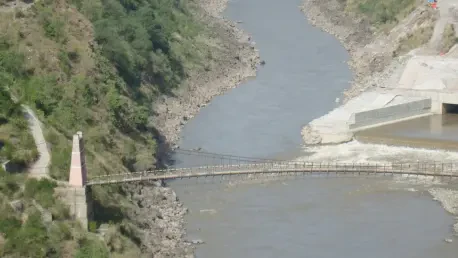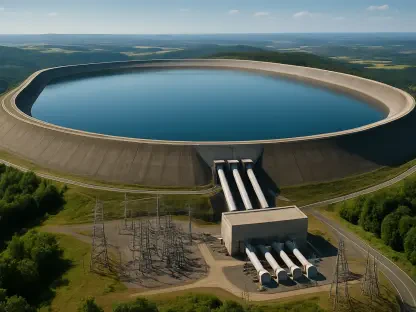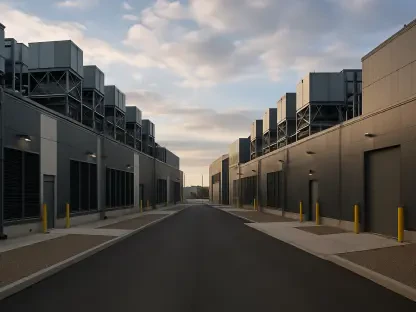Kashmir has long been known for its pristine scenery and natural beauty, but beneath its tranquil surface lies an untapped energy potential that could transform its economic landscape. The hydropower projects in the regions of Gund and Kangan, specifically the Upper Sindh Hydel Projects I and II, once served as catalysts for economic development in the late 1960s and early 1980s. These projects brought not only a stable electricity supply to the local populace but also jobs, infrastructure, and growth. Despite their profound impact, investment in these initiatives has dwindled over the years, leaving a wealth of untapped potential that could drive sustainable growth and energy independence for Jammu & Kashmir.
Potential of Hydropower
Harnessing Natural Resources for Energy
The hydropower projects in Gund and Kangan have been transformative, yet the full potential of the river systems remains overlooked, with experts indicating a capability to generate between 150 to 200 megawatts. Succeeding in this endeavor could illuminate multiple towns, serving not merely as an electricity source but as a beacon of sustainable development. This estimated output underscores how hydropower can act as a cornerstone of energy solutions in the region. Moreover, the government’s Hydropower Policy 2025 reflects an intent to rejuvenate these initiatives by advocating small and medium projects in conjunction with public-private partnerships. Streamlined clearances and local employment creation are also integral components, poised to favorably impact business and quality of life for inhabitants.
Community Involvement and Sustainable Practices
A sustainable approach relies on more than just harnessing energy; it necessitates harmonious integration into the social and ecological fabric. The perpetual flow of water in these areas, coupled with the local community’s historical engagement with hydropower projects, makes suitable the establishment of run-of-river and gravity-based systems. These methodologies minimize ecological disruptions, preserving the natural landscape while fulfilling energy needs. Emphasizing local participation ensures community investment, not only in terms of labor and jobs but also in the shared vision of development that respects environmental boundaries. As the region progresses toward fulfilling India’s Sustainable Development Goals alongside the Net Zero 2070 commitment, these projects stand as pivotal contributions both locally and nationally.
Challenges and Prospects
Addressing Policy and Implementation Gaps
The primary hurdle facing the exploration of Gund and Kangan’s hydropower potential is the lag in policy implementation. While the framework is indeed in place, administrative bottlenecks and decision-making delays have stalled progress. To unlock the region’s potential, an urgent, concerted effort is required to maintain momentum with timely policy executions and infrastructure development. Addressing these delays could cultivate an environment where sustainable energy projects flourish, thereby preventing the perpetual exportation of electricity that leaves local needs unmet. Such advancements are particularly pressing as the populace continues to contend with inconsistent power supplies that hinder both routine life and industrial growth.
Opportunities for an Energy Corridor
Revitalizing these forgotten powerhouses offers a tangible opportunity to position Gund and Kangan as a model energy corridor for Kashmir, showcasing viable pathways to energy independence. A flourishing hydropower sector would not only uplift the local economy but could showcase the effective marriage of tradition with modern technology. As residents view these projects as integral elements of their heritage, their revival could forge a renewed sense of pride and self-sufficiency. By aligning with sustainable energy goals, the region can collaboratively contribute to Jammu & Kashmir’s aspirations, ultimately fostering a replicable model for the rest of the country and possibly the world. This alignment intersects local empowerment with broad-scale sustainability, signaling a prosperous trajectory.
Visionary Outlook for Kashmir
Kashmir, renowned for its breathtaking landscapes and untouched beauty, holds a hidden resource that could revolutionize its economic framework: hydropower. The tranquil regions of Gund and Kangan house the Upper Sindh Hydel Projects I and II, which were vital to economic progress during the late 1960s and early 1980s. These initiatives provided reliable electricity to residents and significantly contributed to local employment, infrastructure development, and overall growth. However, despite their remarkable contributions, investments in these hydropower projects have significantly declined over the years. This decline leaves behind a huge, untapped energy potential that could be harnessed to foster sustainable development and energy independence for Jammu & Kashmir. By revitalizing these projects, the region could secure a more stable and prosperous future, reducing reliance on external energy sources and fostering long-term economic stability and development for its inhabitants.









